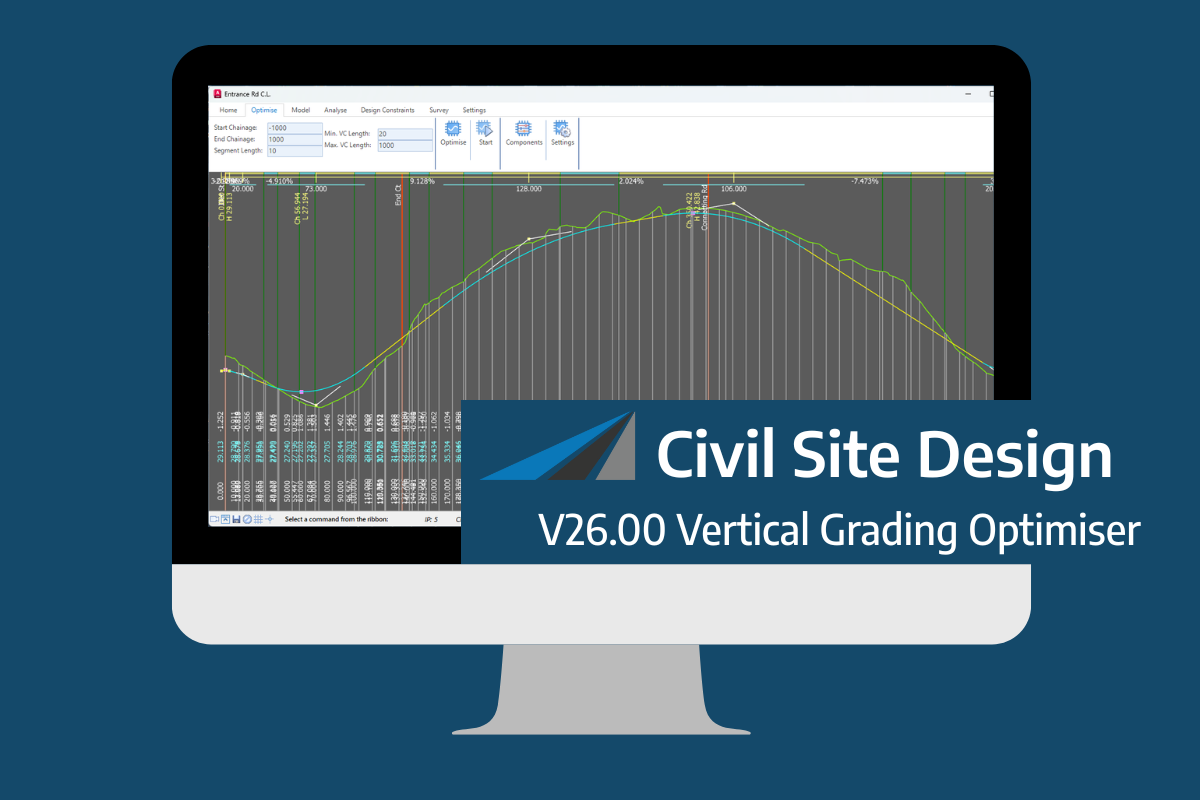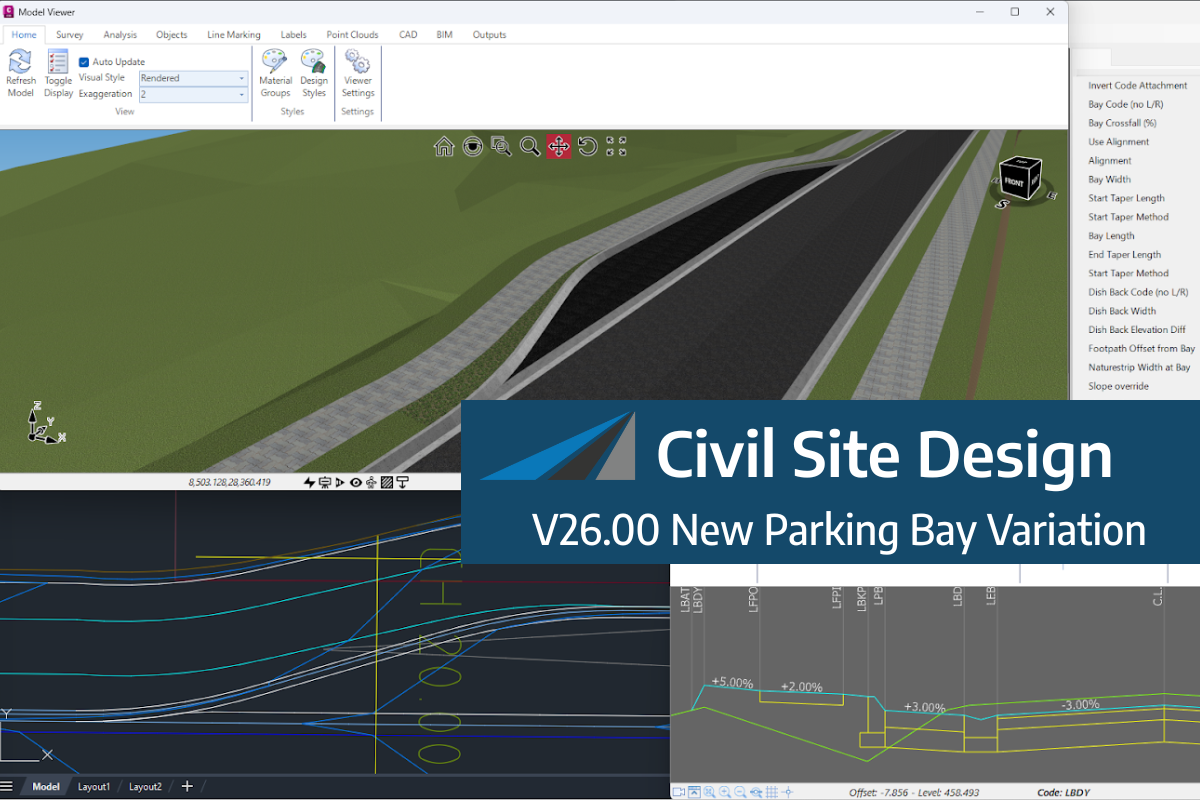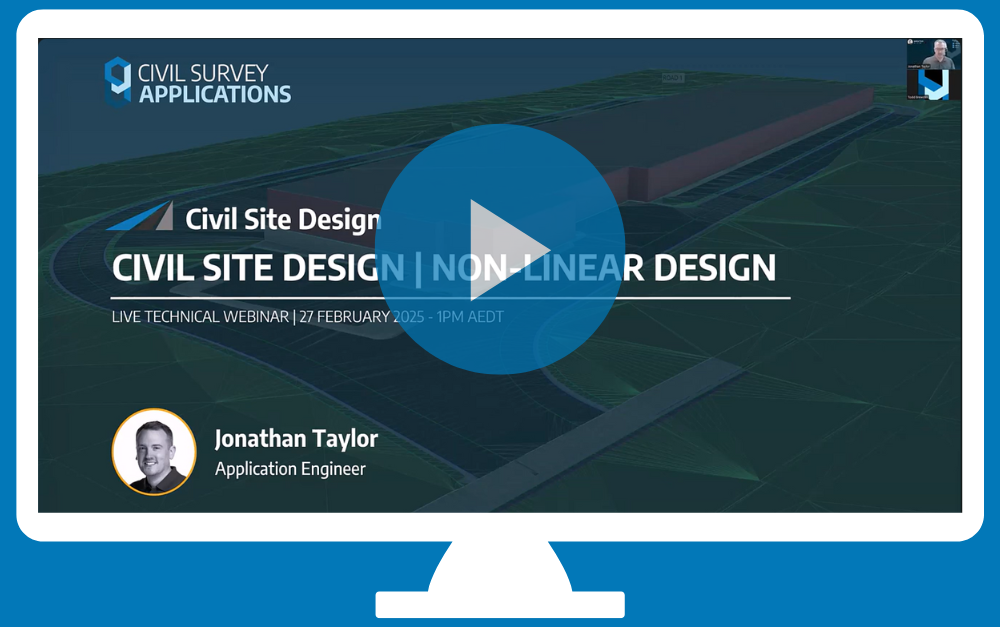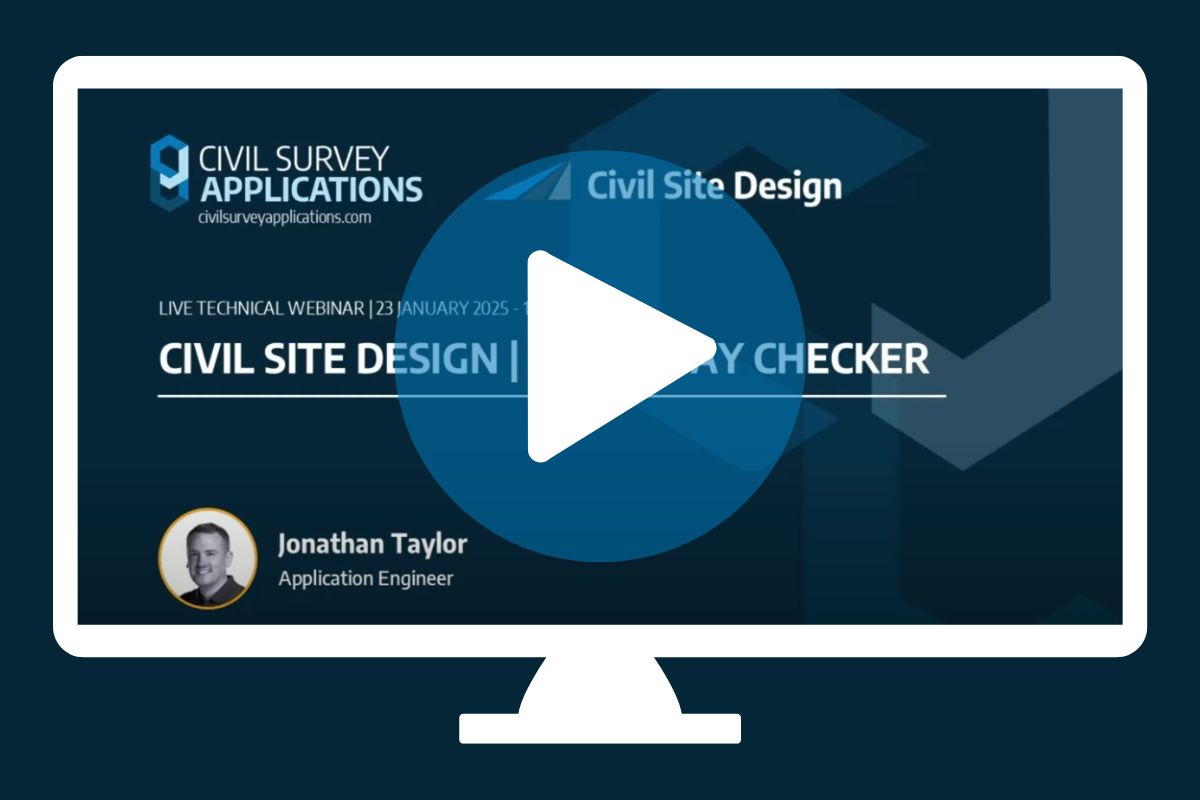Boundary Retraction and Code Filtering
Excess triangulation on the edges of surface models can be time-consuming to clean–up, but with the new Boundary Retraction and Filter by Triangle Codes control added to the Surface Manager boundaries tab, most of the hard work can be done automatically.
Previously only available as an option in Model Builder, Boundary Retraction would remove triangles of a nominated length from the exterior of the model surface, working inwards, effectively removing a large proportion of excess triangles without the need for detailed triangle deletion afterwards. With Boundary Retraction available in Surface Manager, any Civil Site Design surface can utilise this function and have it applied.
Surfaces using codes to link triangles such as Model Builder, Pasted and Subgrade Model Surfaces have the additional option of trimming triangles based on the codes connecting them together. An example of this is the BAT code, typically found at the extents of a surface, which can require manual triangle deletion. With Filter by Triangle Codes, users can pick within a triangle displayed in the drawing and apply the filter to weed out any triangles using a that particular group of codes, such as BAT-BAT-BAT, from the surface.
Users can customise which codes are filtered, set as default for other projects and save the particular code filter lists to load into new projects or share between teams.
In the following example, we have demonstrated the triangulation reduction by applying no boundary trimming to a Model Builder surface, then applying the Boundary Retraction and finally the addition of the Filter by Triangle Codes.
Note that using the Filter by Triangle Codes on Pasted Surfaces requires the pasted surface to have the Apply Codes to Triangles option checked ON. This will assign the codes from the strings the triangulation, which can also be useful when applying Materials to Pasted Surfaces in Model Viewer.
No Boundary Trimming:
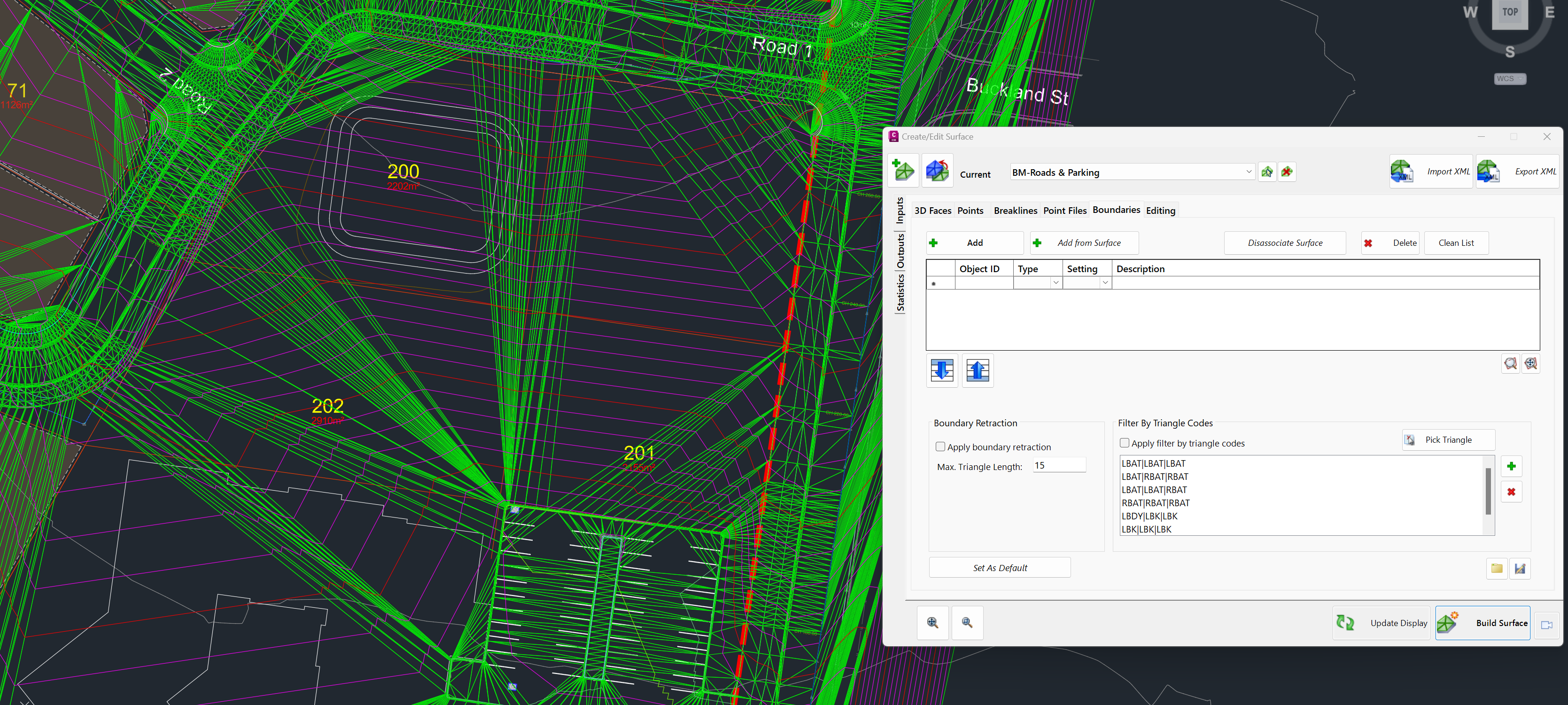
Boundary Retraction:
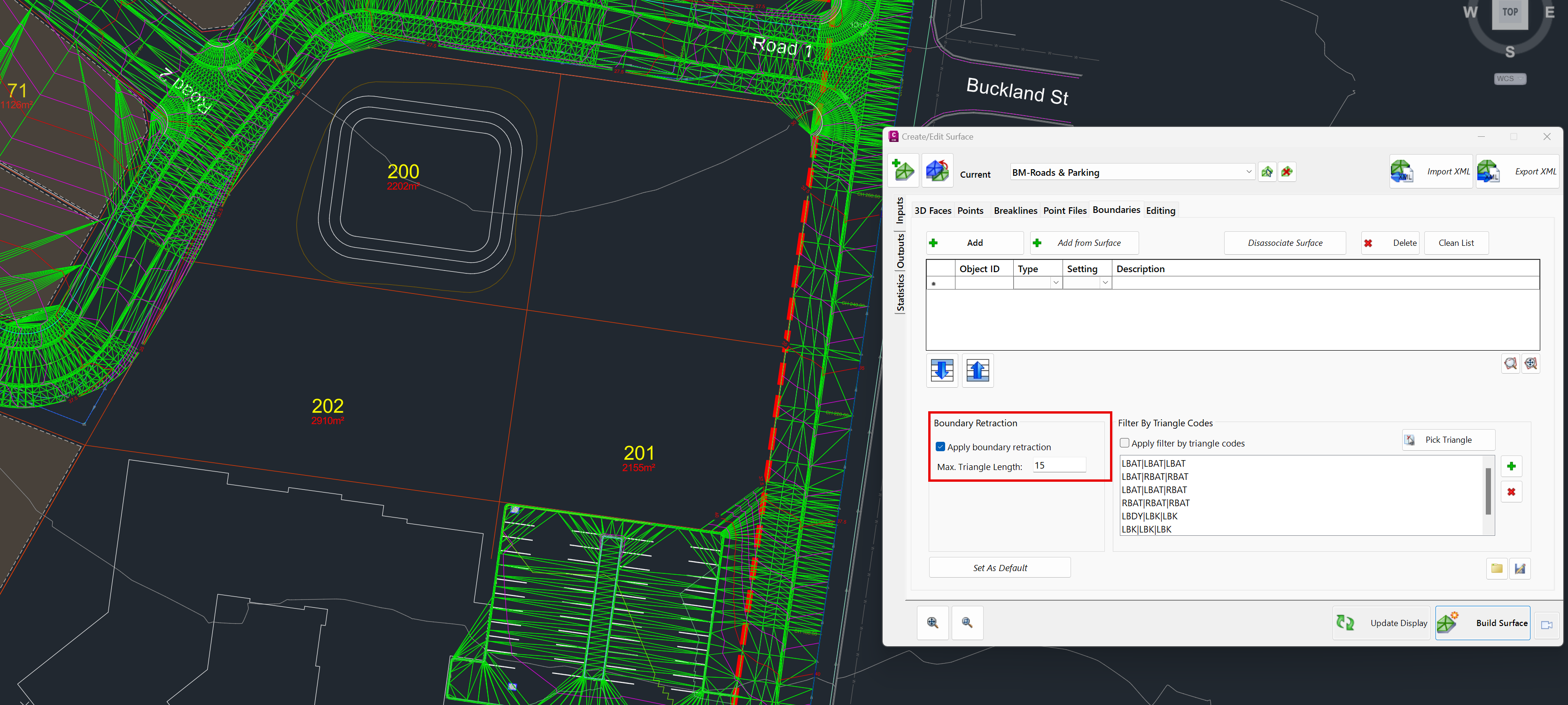
Boundary Retraction & Filter by Triangle Codes:
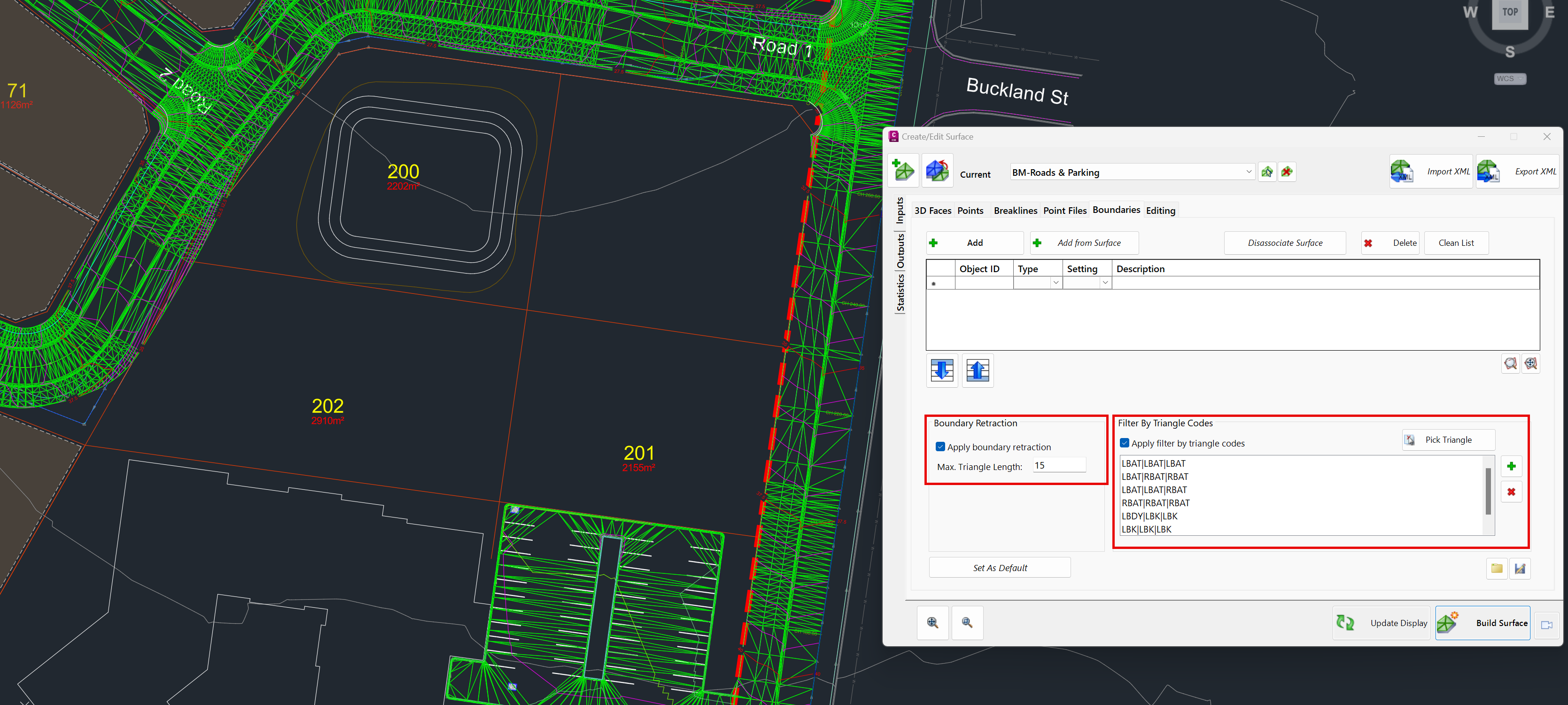
An exciting new tool in Civil Site Design/Corridor EZ v26 is the Vertical Grading Optimizer which can create vertical design profiles based on the parameters you set. Previously, the vertical best fit design profile was based on matching closely to the terrain (within preset cut/fill depths) and adding vertical curves. Mostly, you would remove these […]
We know parking bays come in all shapes and sizes, and that many of them deserve an independently designed string (with cross sections attached to the string to describe the kerb shape of the parking bay). For those parking/bus or widening bays that can be readily described with cross section edits, we’ve got you covered […]
Non-linear design is when a typical, cross section-based design does not generate the intended result. Typically for designs that are non-parallel, such as driveways, car parks, commercial / Industrial, residential & retaining wall projects. In this webinar, our expert, Jonathan Taylor will show you how to use the Civil Site Design tools to tackle these […]
The Civil Site Design Driveway Checker can be used to assist designers with determining clashes on existing & proposed Civil Site Design project designs. In this webinar, our expert, Jonathan Taylor, will be focusing on using the Driveway Checker to check B85 & B99 vehicles over different crossing points on the project, and exploring the […]

